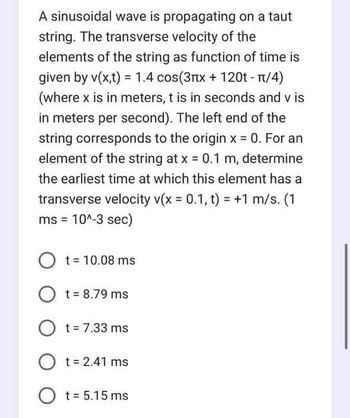Question
i need the answer quickly

Transcribed Image Text:A sinusoidal wave is propagating on a taut
string. The transverse velocity of the
elements of the string as function of time is
given by v(x,t) = 1.4 cos(3x + 120t - π/4)
(where x is in meters, t is in seconds and v is
in meters per second). The left end of the
string corresponds to the origin x = 0. For an
element of the string at x = 0.1 m, determine
the earliest time at which this element has a
transverse velocity v(x = 0.1, t) = +1 m/s. (1
ms = 10^-3 sec)
O t = 10.08 ms
O t = 8.79 ms
O t = 7.33 ms
O t = 2.41 ms
O t = 5.15 ms
Expert Solution
This question has been solved!
Explore an expertly crafted, step-by-step solution for a thorough understanding of key concepts.
Step by stepSolved in 3 steps
